
The Modern Jazz Sextet is a jazz album featuring the combined talents of Dizzy Gillespie, Sonny Stitt, John Lewis, Percy Heath, Skeeter Best and Charlie Persip. The album was conceived by producer Norman Granz for his own label, Norgran Records. Although no single album artist is credited as a bandleader for this album, Verve Records - which owns the Norgran catalogue - files it as a Dizzy Gillespie album.

In the early 1940s in jazz, bebop emerged, led by Charlie Parker, Dizzy Gillespie, Thelonious Monk and others. It helped to shift jazz from danceable popular music towards a more challenging "musician's music." Differing greatly from swing, early bebop divorced itself from dance music, establishing itself more as an art form but lessening its potential popular and commercial value. Since bebop was meant to be listened to, not danced to, it used faster tempos. Beboppers introduced new forms of chromaticism and dissonance into jazz; the dissonant tritone interval became the "most important interval of bebop" and players engaged in a more abstracted form of chord-based improvisation which used "passing" chords, substitute chords, and altered chords. The style of drumming shifted as well to a more elusive and explosive style, in which the ride cymbal was used to keep time, while the snare and bass drum were used for accents. This appealed to a more specialized audiences than earlier forms of jazz, with sophisticated harmonies, fast tempos and often virtuoso musicianship. Bebop musicians often used 1930s standards, especially those from Broadway musicals, as part of their repertoire. Among standards written by bebop musicians are Gillespie's "Salt Peanuts" (1941) and "A Night in Tunisia" (1942), Parker's "Anthropology" (1946), "Yardbird Suite" (1946) and "Scrapple from the Apple" (1947), and Monk's "'Round Midnight" (1944), which is currently the most recorded jazz standard composed by a jazz musician. An early 1940s style known as "jumping the blues" or jump blues used small combos, uptempo music, and blues chord progressions. Jump blues drew on boogie-woogie from the 1930s. Kansas City Jazz in the 1930s as exemplified by tenor saxophonist Lester Young marked the transition from big bands to the bebop influence of the 1940s. These divergences from the jazz mainstream of the time initially met with a divided, sometimes hostile response among fans and fellow musicians, especially established swing players, who bristled at the new harmonic sounds. To hostile critics, bebop seemed to be filled with "racing, nervous phrases". Despite the initial friction, by the 1950s bebop had become an accepted part of the jazz vocabulary. The most influential bebop musicians included saxophonist Charlie Parker, pianists Bud Powell and Thelonious Monk, trumpeters Dizzy Gillespie and Clifford Brown, and drummer Max Roach.
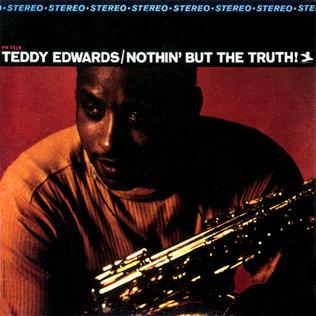
Nothin' But the Truth! is an album by saxophonist Teddy Edwards which was recorded in 1966 and released on the Prestige label.

Together Again!!!! is an album by trumpeter Howard McGhee and saxophonist Teddy Edwards which was recorded in 1961 and released on the Contemporary label.
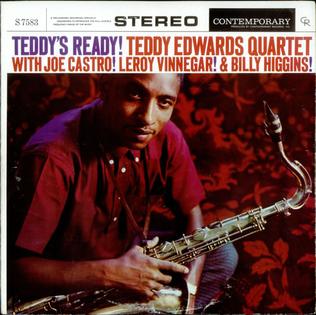
Teddy's Ready! is an album by saxophonist Teddy Edwards which was recorded in 1960 and released on the Contemporary label.

Cello Again is an album by bassist and cellist Sam Jones which was recorded in 1976 and released on the Xanadu label.
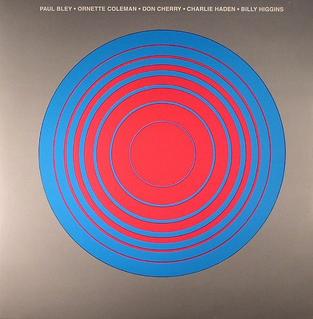
Live at the Hilcrest Club 1958 is a live album by pianist Paul Bley, saxophonist Ornette Coleman, trumpeter Don Cherry, drummer Billy Higgins and bassist Charlie Haden recorded in California in 1958 and released on the Inner City label in 1976. The album was the first live recording of Ornette Coleman, made shortly after he recorded his first album, Something Else!!!! and featuring the group that would soon record the Atlantic albums The Shape of Jazz to Come (1959) and Change of the Century (1960).
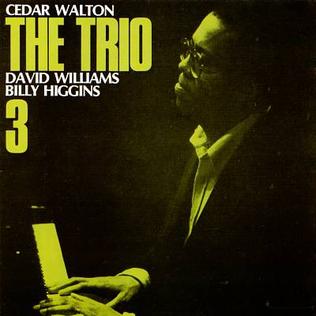
The Trio 3 is a live album by pianist Cedar Walton, bassist David Williams and drummer Billy Higgins recorded in 1986 and released on the Italian Red label.

Fred Katz and his Jammers is an album by Fred Katz originally released on Decca in 1959.
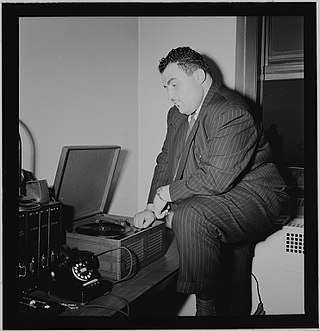
Theodore Samuel Reig was a self-described "jazz hustler" who worked as a record producer, A&R man, promoter, and artist manager from the 1940s through the 1970s. As a record producer, he captured the work of dozens of legendary jazz innovators. He also influenced rhythm and blues, rock and roll, and Latin music.
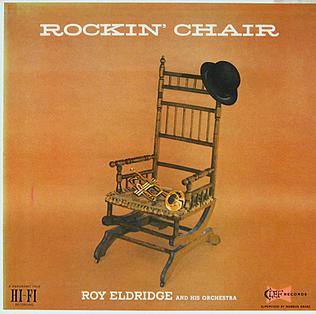
Rockin' Chair is an album by American jazz trumpeter Roy Eldridge recorded in 1951 and 1952 and originally released on the Clef label.

Sunset Eyes is an album by saxophonist Teddy Edwards recorded in 1960 and released on the Pacific Jazz label.

Artworks is an album by saxophonist Art Pepper recorded in 1979 at the sessions that produced So in Love but not released on the Galaxy label until 1984.

Art 'n' Zoot is a live album by saxophonists Art Pepper and Zoot Sims recorded in 1981 at Royce Hall in Los Angeles and released on the Pablo label in 1995.
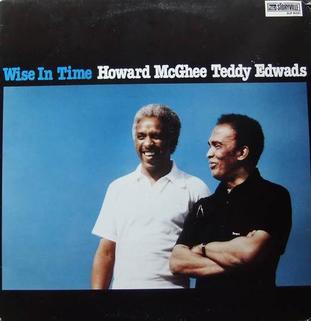
Wise in Time is an album by trumpeter Howard McGhee and saxophonist Teddy Edwards recorded in 1978 and released on the Storyville label.
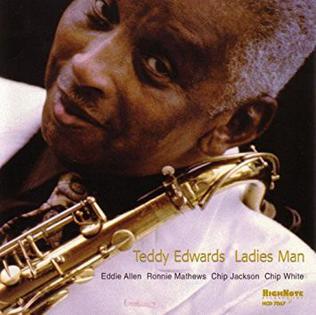
Ladies Man is an album by saxophonist Teddy Edwards which was recorded in 2000 and released on the HighNote label the following year.

Mississippi Lad is an album by saxophonist Teddy Edwards featuring Tom Waits on two tracks which was recorded in 1991 and originally released on the French Verve/Gitanes label in Europe and on Antilles Records in the US. The album was Edwards' first recording in a decade.

Young at Heart is an album by trumpeter Howard McGhee and saxophonist Teddy Edwards recorded in 1979 and released on the Storyville label.

Sonny Rollins at Music Inn/Teddy Edwards at Falcon's Lair is a live split album featuring saxophonists Sonny Rollins and Teddy Edwards, recorded for the MetroJazz label in 1958.

Reflections is an album by saxophonist Frank Morgan which was recorded in 2005 and released on the HighNote label the following year.




















